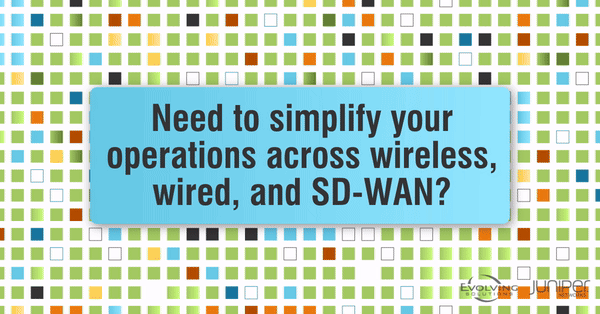What can AI do for my Network?
Have you heard about this thing called AI yet? Of course you have. There is a lot of hype, a lot of promise, and in many cases, a lot of confusion concerning just what AI can do for today’s network environments. The reality is that AI is fundamentally transforming network operations. But the key question is, what can it do for your business?
First, it is essential to understand that AI manifests in two primary forms in this context: predictive and generative.
- Predictive AI is primarily used for anticipatory functions. Predictive AI models analyze patterns in network usage to predict future states, enabling proactive responses to potential issues. Capabilities include the ability to predict equipment failures, schedule maintenance before problems arise and avoid downtime. In cybersecurity, predictive AI can help in detecting potential threats by identifying deviations from normal network behavior, suggesting possible security incidents before they fully manifest.
- While Generative AI is the new kid on the block, many are already familiar with its ability to create new content that is novel and often indistinguishable from content created by humans. It can be used to simulate new network architectures or protocols and generate a variety of potential scenarios for network optimization and testing. Generative AI can also be used to automate the design of complex network configurations to find potentially innovative solutions to improve performance or resilience that previously may not have been considered.
Old vs. New
There’s a tendency to romanticize how tasks “used to be done,” yet the demands of the modern world leave little room for manual processes. Remember the days when security teams were tasked with locating an end-user device once a malware signature had been detected on it. This is no longer a necessity. Today, AI-enhanced network management systems can detect devices exhibiting suspicious behavior and immediately flag them. These systems are programmed to take pre-emptive measures, such as disconnecting the affected device and isolating it from the network to halt the potential spread of malware. Afterwards, AI can analyze the event to improve its detection capabilities, its predictive models, and its mitigation effectiveness. All of this, without the need for human intervention.
Posturing OS and application versions has often proved to be drudgery to network professionals before letting users and device unto the correct segments of the network. It is also time poorly spent on this caliber of talent. There was a time when you had to have access to newly published content from vendors to learn about pertinent updates and vulnerabilities manually. Today, integrated networks along with API’s from toolsets like CAASM (Cyber Asset Attack Surface Management) systems can efficiently manage all asset inventory management and version tracking tasks across the network, applying best practices and risk scores and appropriate updates to mitigate vulnerabilities. This allows for much more dynamic (without human intervention) and secure network access-control and will only get better as more systems are integrated and use AI.
User Personalized Network Experiences
We’re all accustomed to how cloud services, social media platforms, and online retailers tailor our personal experiences, but it is also true for today’s networks as well. Brick and mortar retailers can now leverage AI just like their online counterparts to analyze customer foot traffic to understand where shoppers congregate to assess the effectiveness of product displays and promotions. Universities and community campuses utilize location-based networking (LBN) platforms to facilitate connections between users or to resources in their proximity. In critical environments like hospitals and manufacturing plants, real-time asset tracking is crucial for swiftly locating assets when time is of the essence, alongside analyzing asset utilization history to ensure optimal inventory levels. Similarly, long-term care facilities employ LBN technologies to safeguard patients by preventing them from wandering off, showcasing the wide-ranging applicability and benefits of these advanced network capabilities across various sectors. The issues addressed by AI networking today aren’t limited to technological challenges.
Juniper and AI
For years now, Juniper has been at the forefront of integrating AI into network operations to set a new standard for how networks are designed, managed, and secured. Their innovative approach enhances network reliability and performance while providing insights that can reduce operational complexities and costs at the same time. In essence, Juniper is fostering the development of intelligent networks that dynamically adjust to the changing needs of businesses and their users in real time.
Juniper has built AI into its platform for years to assist network operation teams in their Day 2 operations. By creating baselines for the many devices and users of your environment, Juniper AI can then identify anomalies in real time to improve MTTR to rectify issues before they become impactful problems. And then there is Marvis, the virtual network assistant that like Chat-GPT, is always there to assist your network support team and simplify network operations by providing natural language interactions and automating troubleshooting processes. Simply ask it questions about a user’s network performance and let it use its algorithms to drastically simplify troubleshooting and make your support team more efficient and ensure greater business continuity.
Why Evolving Solutions
At Evolving Solutions, our experience with AI-integrated systems dates back to their inception. The successful deployment of these technologies demands experts skilled in designing your AI ecosphere. This includes nuanced considerations like data hosting, securing sensitive information, and ensuring its accessibility to AI systems.
The Evolving Solutions Networking team possesses the requisite expertise and is poised to demonstrate how to leverage AI to benefit your business. By taking the time to understand your unique business needs, we tailor AI solutions to align with your objectives, ensuring your business remains the top priority. Let us guide you in harnessing AI to serve maximize your business, the network that drives it.
